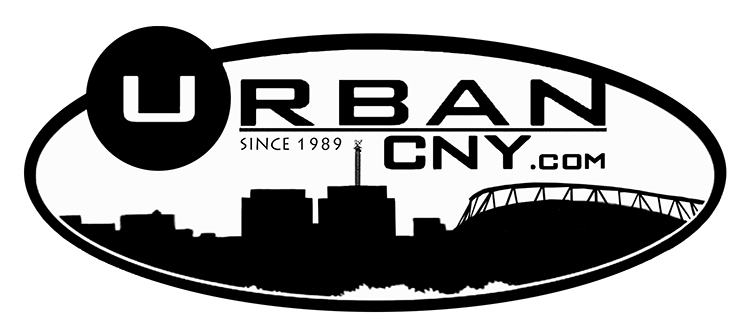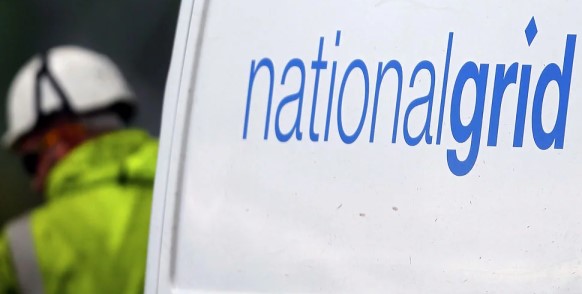Wholesale natural gas supply costs expected to be higher than last winter
With market prices for natural gas expected to increase this coming winter heating season, National Grid is actively promoting bill management programs and options, and increasing outreach to ensure customers are aware of the forecast and have time to take advantage of all available services and tools that can help them save money on their energy bills.
 National Grid’s resources include numerous payment assistance programs for income-eligible customers, extensive residential and business energy efficiency programs and incentives, low-cost and no-cost bill management solutions, and flexible payment programs.
National Grid’s resources include numerous payment assistance programs for income-eligible customers, extensive residential and business energy efficiency programs and incentives, low-cost and no-cost bill management solutions, and flexible payment programs.
“We recognize that higher energy prices will add to the financial burden for our customers who are struggling with higher costs at the grocery store, gas pump and elsewhere,” said Melanie Littlejohn, National Grid’s New York Vice President for Customer and Community Engagement. “Our commitment is to support our customers by helping them stay warm and safe this winter. National Grid has many assistance programs available, as well as energy saving strategies, resources and tips. We are encouraging our customers to take action now, before the cold weather arrives.”
Littlejohn noted that the company is conducting proactive outreach through email, radio advertisements, traditional and social media, customer assistance webinars, and bill messaging to alert customers to higher prices and highlight programs to help them manage their energy bills. Additionally, National Grid is partnering with United Way affiliates across New York to promote the nonprofit’s 211 helpline that provides health and human services information, referral, assessment, and crisis support for callers in need.
How Current Forecasts Will Affect Winter Bills
Based on current market conditions, National Grid’s residential natural gas customers who use an average of 713 therms during the five-month winter heating season — November 1, 2022, to March 30, 2023 — are forecasted to pay about $263 more than last winter. That’s a 39% increase for the same amount of energy use over five months, with $231 of that increase attributed to higher wholesale supply prices. The remaining portion of the increase is related to delivery price increases approved as part of the company’s multi-year rate agreement and other customer bill surcharges.
For electricity, Central New York residential customers are forecasted to pay about $22 or just under 5% more than last season, with $11 of that increase attributed to higher supply prices, and the remaining amount associated with a regulatory-approved delivery price increase and other bill surcharges. The forecast is based on average electricity use of 600 kilowatt-hour per month.
National Grid plays an active role in managing the natural gas and electricity purchased on behalf of customers by using gas storage and future price hedges, or locked-in pricing. Today’s forecasts factor in the benefit of the company’s hedging strategies, which are helping to mitigate wholesale supply price volatility on customers’ bills. As a reminder, the cost of energy supply is set by the marketplace and passed directly on to customers without markup.
The winter bill forecasts are based on information available at the end of August and assume typical winter weather conditions. Because energy costs and use are impacted by weather and other market factors, the company reminds customers that today’s forecasted figures are approximate and based on a snapshot in time. In addition to weather, factors that determine actual costs are wholesale energy supply prices, global supply and demand, and energy use, all of which can be dramatically impacted by severely cold temperatures.
Customer Assistance
Customers who are having difficulty with affording their energy bills are encouraged to contact National Grid as soon as possible. There are several assistance programs for income-eligible customers, including:
- New York state’s one-time Electric & Gas Bill Relief credit program, which eliminates unpaid utility bills accrued through May 1, 2022, for qualifying customers. Customers can qualify for the arrears relief program until December 31, 2022.
- The federal Home Energy Assistance Program, which provides eligible customers with financial grants that assist in paying home heating bill. These grants do not need to be repaid. The program is administered by county departments of social service and typically runs from November through March, but the timeframe may be lengthened or shortened based on federal funding availability. For more information about HEAP, contact your county’s department of social services.
- National Grid’s Energy Affordability Program, which provides automatic monthly gas and electricity bill credits for HEAP-eligible customers or customers who participate in other qualifying programs.
- NYSERDA’s EmPower New York Income-Eligible Free Weatherization Program, under which a participating contractor will complete a no-cost home energy assessment to identify if a home would benefit from free energy upgrades such as high-efficiency lighting, attic and wall insulation, replacement of old, inefficient refrigerators and freezers and water-saving showerheads.
Additionally, National Grid Consumer Advocates work directly with customers to help them manage their energy bills. The Advocates specialize in assisting income-eligible and vulnerable customers, aligning them with available programs and services offered by National Grid and local agency partners. They can be reached at 1-800-642-4272 or ConsumerAdvocatesUNY@nationalgrid.com.
Additional Customer Solutions:
- The Budget Billing Program, open to all residential customers, spreads payments out more evenly across the year to help better manage energy costs.
- The Home Energy Savings Program, available as a pilot program for customers in Oneida, Onondaga and Oswego counties, offers one-stop shopping for a residential customer’s energy needs and flexible financing options that could mean little-to-no additional monthly costs for home improvement projects. The program offers personalized home upgrades, which could have little to no out-of-pocket costs depending on the proposed energy savings and available financing options.
- A no-cost home energy audit, available through NYSERDA, provides a top-to-bottom look at where a home is wasting energy. Customers will learn the root cause of any drafts, inconsistent temperatures, heating and cooling system failures, and other problems, and will receive recommendations on how to address these issues.
- National Grid’s free online home energy survey, a no-cost, five-minute questionnaire that provides customers with a custom energy savings report.
- The company also encourages customers to take advantage of additional payment and billing options, including flexible payment agreements and special protections.
Heating Savings Tips
Heating a home is one of the most significant energy investments most customers make, and energy efficiency can lower bills while enhancing comfort. Simply put, when customers save more energy, they save more money. National Grid offers the following tips:
- For every 1 degree a thermostat is set back, customers can save 1% to 3% on their annual heating costs.
- Turn down the thermostat every time you leave the house for two hours or more, and each night before you go to bed. It takes less energy to warm up a cool house than to maintain a warm temperature all day and night.
- Consider a smart thermostat as an inexpensive, easy way to maintain comfort and cut heating costs. When used properly, a smart thermostat can save 10% on heating and cooling costs annually.
- Insulate the attic, walls, ceilings, and floors to prevent heat from escaping.
- Take advantage of the sun: Open drapes during the day to capture warmth and close them at night to prevent heat loss through windows.
- Seal holes and cracks where cold air can get in, especially in the attic and basement. Reducing drafts in a home may save 15% in heating and cooling costs annually.
- Remove window air conditioning units during the cold months to reduce drafts. If this is not possible, cover the inside and outside of the units.
- If you’re looking to replace an appliance, choose one that is ENERGY STAR® certified and save anywhere from 10% to 50% in energy costs. For example, replacing a refrigerator that is older than 15 years with an ENERGY STAR® certified refrigerator can save up to $1,000 over the lifetime of the unit.
- Unplug electronic devices when they are not in use. While it may appear as if electronics are powered off, they may actually be in standby mode and still consuming electricity. Eliminating phantom electricity by unplugging home electronics can save up to 10% per year.
- Repairing or replacing leaky faucets can save $20 per month in lost water.
- Washing your clothes in cold water can save up to 50 cents per load in water heating costs.
- A 100-watt incandescent bulb and 16.6-watt LED bulb each provide approximately 1,500 lumens of brightness. Replacing five incandescent bulbs with LEDs can save more than $11 a month. Lighting accounts for around 15% of a home’s electricity use. The average household can save about $225 in energy costs per year by switching to LED lighting.
- If your hot water heater tank is warm to the touch, consider insulating it to save 7% to 16% annually in water heating costs. Consult your water heater manufacturer for their recommended products and safety warnings.
- Have your heating system serviced annually, and never try to repair it yourself. Customers who qualify for HEAP may also receive a Clean and Tune Benefit, which provides up to $400 for the cleaning and maintenance of primary heating equipment, chimney cleaning, and installation of carbon monoxide detectors or programmable thermostats.
- If your heating system has a filter, clean or replace it every month during the heating season. Cleaning or replacing your filters as directed by the manufacturer can reduce energy use by up to 15%.
- If your heating equipment is near the end of its lifespan, consider a high-efficiency replacement before the heating season starts and the rebates that are available. A new high-efficiency gas furnace can save up to 30 percent on heating costs.
- Customers who qualify for HEAP may qualify for the Heating Equipment Repair and Replacement benefit that provides grants based on the actual cost to repair or replace heating equipment in your home.
- Residential customers also can take advantage of instant rebates at the National Grid Marketplace on energy-efficient light bulbs, smart thermostats and more products that will help save energy and money.
- National Grid also offers discounts and incentives for residential customers looking to replace or upgrade their energy systems and controls. Many appliances and devices qualify, including the installation of high efficiency furnaces; steam- and hot-water boilers and combination boiler-water heaters; air, ground-source and mini-split heat pumps; electric heat pump, gas storage and on-demand water heaters; boiler reset controls and thermostatic radiator valves; energy recovery ventilators; and smart thermostats.
- Small business, commercial and industrial customers can take advantage of energy savings programs, including energy studies, and incentives to replace aging or inefficient equipment such as high-efficiency boilers and furnaces, variable frequency drives, lighting, compressed air system controls, and refrigeration and humidity controls.
“Energy efficiency can lower your energy bills, enhance comfort and make a positive impact on the environment,” Littlejohn said. “Offering these programs and incentives to all our customers, especially those who are experiencing challenges, personifies our Project C commitment to champion social equity within the communities where we live and work.”
Partnership with 211
National Grid is working with United Way of New York State to support the 211 human services hotline, which connects callers to essential non-emergency public services like food and shelter, referrals to non-profit services, and information about benefit programs. In addition to sponsoring the 24-hour phone line, National Grid’s customer contact center staff will be cross-trained to refer and transfer callers demonstrating a need for services beyond energy affordability to a 211 Community Resource Specialist. Staff at 211 call centers also will receive training to transfer National Grid customers in need of payment assistance to the company’s call center.









